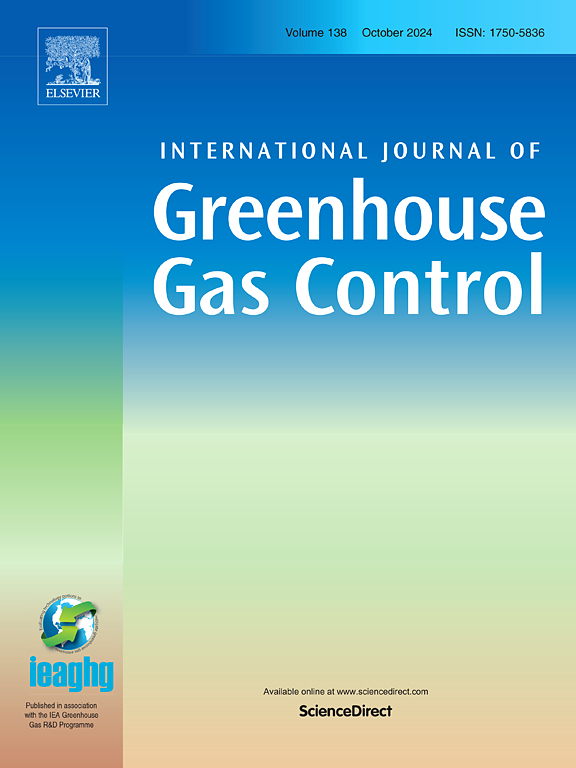在含盐含水层大量注入采出水引发地震对二氧化碳大规模地质储存的影响
IF 5.2
3区 工程技术
Q2 ENERGY & FUELS
International Journal of Greenhouse Gas Control
Pub Date : 2025-08-22
DOI:10.1016/j.ijggc.2025.104447
引用次数: 0
摘要
众所周知,为了显著减少温室气体排放,必须大规模地进行地下地质构造(CCS)中的二氧化碳捕获和储存。在这种情况下,向含盐含水层大规模注入超临界二氧化碳的过程类似于处理与油气(SWD)共产的大量盐水。然而,在过去的15年中,北美大陆中部咸水含水层的大规模SWD导致了板内地震活动的显著增加。2010年以来,仅在俄克拉何马州和德克萨斯州,就有近40亿m3的采出水注入到与发震地质基底水力连通的沉积层中,引发了5.8级以上地震和200多场震感较强的≥4.0级地震。在与基底水文连通的深咸水含水层中,每一次大尺度SWD都引起了显著的诱发地震活动。如果二氧化碳储存项目与诱发地震活动有关,公众可能会认为这是一项危险的活动,不应该允许继续进行,通常无论诱发事件的强度如何。因此,在大型CCS项目将面临的诸多挑战(操作、地质和经济)中,它们还需要最大限度地减少注入引起的地震活动的发生。在本文中,我们回顾了在美国中部四个地震活动性丰富的地区进行的广泛研究,这些地区是由美国中部大规模SWD引起的,类似于大规模CO2注入过程。我们的主要目的是向非专家介绍这些领域现有的大量科学证据的关键发现,这些发现有助于指导有关寻找地质构造中长期、大规模二氧化碳储存的可行选择的决策。本文章由计算机程序翻译,如有差异,请以英文原文为准。
Implications of earthquakes triggered by massive injection of produced water in saline aquifers for large-scale geologic storage of CO2
It is well-established that to significantly decrease greenhouse gas emissions, CO2 capture and storage in subsurface geologic formations (CCS) must occur at an enormous scale. In this context, large-scale injection of supercritical CO2 into saline aquifers is an analogous process to the disposal of large volumes of saltwater co-produced with oil and gas (SWD). However, large-scale SWD in saline aquifers over the past 15 years in the mid-continent of North America has caused a remarkable increase in intraplate seismicity. Since 2010, nearly 4 billion m3 of produced water has been injected into sedimentary layers that are in hydraulic communication with seismogenic geologic basement in Oklahoma and Texas alone, triggering earthquakes as large as magnitude 5.8 and more than 200 M ≥ 4.0 earthquakes that were widely felt. Every case of large-scale SWD in the mid-continent in deep saline aquifers in hydrologic communication with basement has caused significant induced seismicity. If CO2 storage projects are associated with induced seismicity, they could be perceived by the public as a hazardous activity which should not be allowed to continue, generally regardless of the magnitudes of the induced events. Thus, among many challenges (operational, geologic and economic), large-scale CCS projects will face, they also will need to minimize the occurrence of injection-induced seismicity. In this paper, we review the extensive research carried out in four regions of the central U.S. with abundant seismicity induced by large-scale SWD in central U.S. as an analogous process to large-scale CO2 injection. Our primary purpose is to inform non-experts of the key findings of the large body of scientific evidence now available in these areas that help guide decision making related to finding viable options for long-term, large-scale CO2 storage in geologic formations.
求助全文
通过发布文献求助,成功后即可免费获取论文全文。
去求助
来源期刊
CiteScore
9.20
自引率
10.30%
发文量
199
审稿时长
4.8 months
期刊介绍:
The International Journal of Greenhouse Gas Control is a peer reviewed journal focusing on scientific and engineering developments in greenhouse gas control through capture and storage at large stationary emitters in the power sector and in other major resource, manufacturing and production industries. The Journal covers all greenhouse gas emissions within the power and industrial sectors, and comprises both technical and non-technical related literature in one volume. Original research, review and comments papers are included.

 求助内容:
求助内容: 应助结果提醒方式:
应助结果提醒方式:


